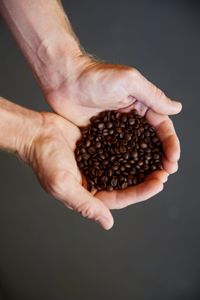
In chemistry, acidity refers to a solution’s pH level—lemon juice, for example, is acidic, and baking soda is basic. However, when people describe coffee, wine, or any other food or drink in terms of its acidity, they’re not talking about the pH level. Instead, think of “acidic” as a synonym for “bright,” “tangy,” “sharp,” “nippy,” “sour,” or, in extreme conditions, “astringent” and “bitter.” With the right proportions, acidity adds complexity and depth to a coffee bean’s flavors. Learn more about how this factors into a cup’s taste in the following guide.
What Affects the Acidity Level in Coffee?
Acidic tastes in coffee are primarily caused by four chemical compounds: citric acid, malic acid, tartaric acid, and ethanoic acid. Several conditions can lead to different ratios of these acids, including the following.
Growing Conditions
High altitudes and shade cause coffee plants to mature more slowly than average, which means their fruit will be especially sweet with concentrated flavors and high acidity. Arabica coffee beans, for example, are generally acidic and grow between 3,000 and 6,000 feet above sea level.
Processing Methods
To process coffee, harvesters need to remove the beans, which are the seeds, from the fruits. There are three methods for removing the seed: wet, dry, or semi-washed. The distinctions between these processing methods depend on how much of the fruit is removed before or after the beans are dried. In general, washed coffee is more acidic and revels the intrinsic bean flavor.
Bean Roasting
 When the main component in cane sugar—sucrose—goes through the roasting process, it degrades, forming acetic acid, also known as vinegar. In small quantities, vinegar adds a winey characteristic to the coffee that tastes delicious as long as you combine it with sweetness.
When the main component in cane sugar—sucrose—goes through the roasting process, it degrades, forming acetic acid, also known as vinegar. In small quantities, vinegar adds a winey characteristic to the coffee that tastes delicious as long as you combine it with sweetness.
There are two categories of chlorogenic acid—both of which can affect the taste of the coffee: mono-caffeoyl and di-caffeoyl. As the former breaks down during the roasting process, it introduces more quinic and caffeic acids into the mix. Too much of these acids can create harshness while the right amounts can add body—one of the primary tactile markers you’ll notice as you enjoy a cup of coffee
Bean Grinding
Always match the grind of the roasted beans with the brewing method. French Press a method course grind, a Drip grind method a medium grind, an Espresso method a fine grind.
Brewing
Some brewing methods extract more coffee molecules than others, which causes them to taste more acidic and flavorful. Espresso is the most highly concentrated, while percolators, drip, and French press coffee extract less of the bean flavor and acidity. Cold-brew coffees are the lowest-acid option and are preferred by people who enjoy a sweet, smooth taste or have sensitive stomachs.
Timing
The longer a cup of coffee sits, the less acidic it becomes. Studies show the pH of freshly brewed coffee can drop by 15% after just one hour.
Individual Variances
Everyone’s taste is different. How a cup of coffee tastes to you isn’t the same as how a friend will experience it. Some food scientists believe saliva type and how much volume of coffee is drunk in a sip can influence the perception of flavor.
Maui Coffee Roasters in Kahului, HI, can help you figure out which coffee you’ll adore. Since 1982, they’ve roasted all kinds of coffee, from 100% Kona to Hawaiian blends, Ka'u coffee, international beans, and even organic and decaf. To learn more about the local small-batch coffee roasters, visit their website. Call (808) 877-2877 with any questions about their coffee beans or other products.
About the Business
Have a question? Ask the experts!
Send your question

